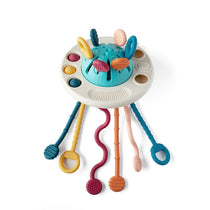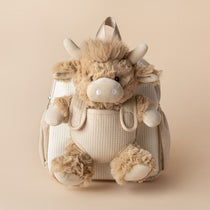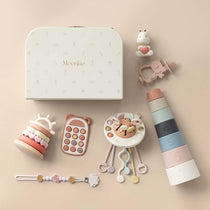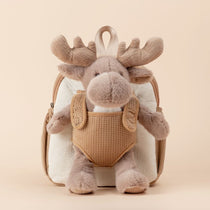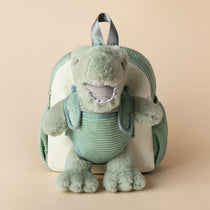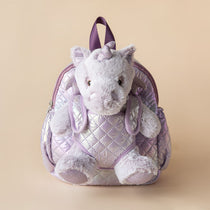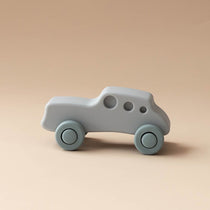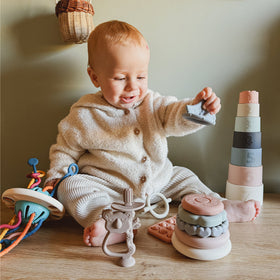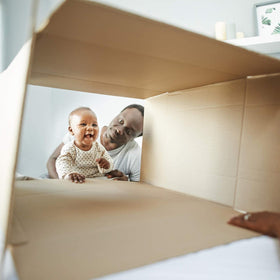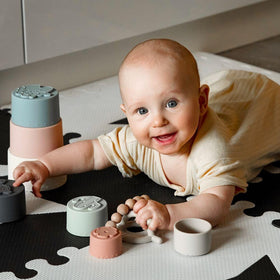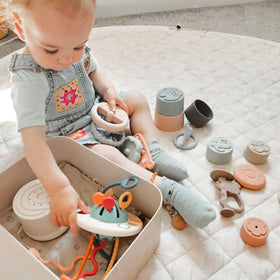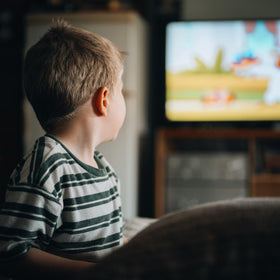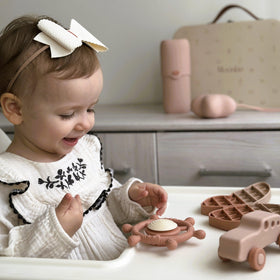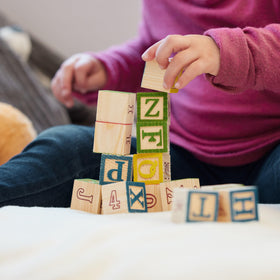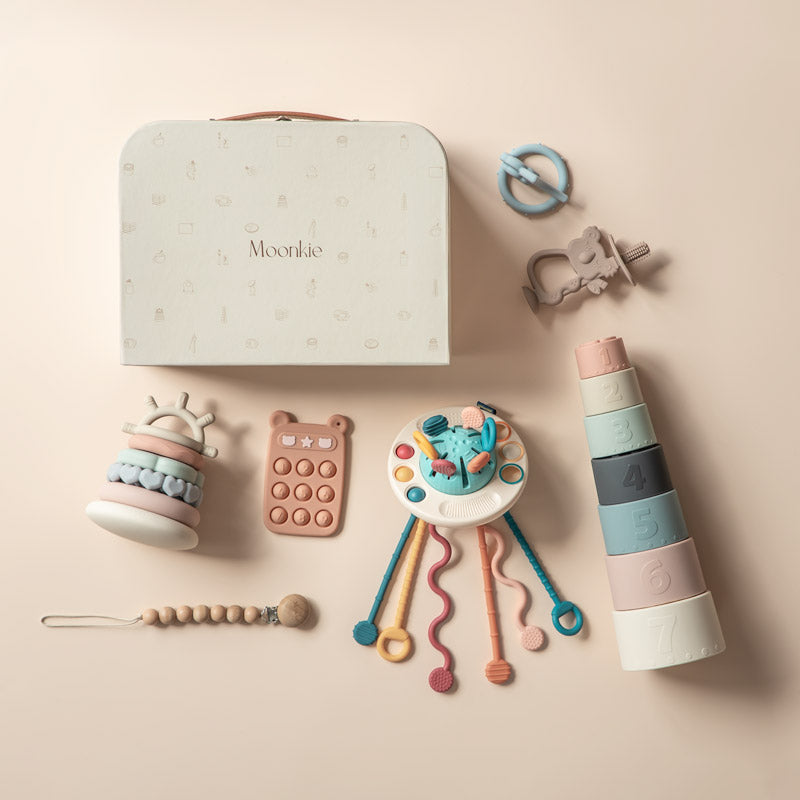
Anyone who grew up with a storyteller in their family probably carries fond memories of tall tales told with vivid descriptions and exaggerated plotlines. What joy storytelling brings! As it turns out, there is a difference between reading a story to your child and turning it into an adventure.
Turning books into adventures for small children involves getting into the story yourself. Reading with silly voices, dramatic pauses, big facial expressions, and extra noises will draw your child into the story and make it more fun for everyone.
Putting so much work and creative effort into reading stories to your child will likely make you feel like you had a workout, but it will also ignite a love for stories and books in your toddler while creating fun memories. It's worth it!
10 Tips for Reading to Entertain and Engage
Do you aspire to become a voice actor, public speaker, sales manager, or teacher? Reading children's books is a fantastic way to build skills! Are you hoping to develop your child's ability to focus and absorb vocabulary? Colorfully reading children's books is one of the best ways to do so.
When I was in preschool and elementary school, I remember longing for reading time because I loved listening to my teachers read. Each of them had had decades of practice reading books out loud with so much enthusiasm that it engaged twenty to thirty kids to sit in anticipation, listening intently to every page.
Now, contrast that skill with an adult trying to read the story to just get it over with. No excitement, no curiosity, and no fun. Unless the listening child is already a bookworm, the parent will likely not finish the book or get interrupted multiple times.
If a child's primary adult book reader doesn't seem to enjoy reading books, why would the kid? Reading would eventually feel like a chore more than entertainment. However, if the adult who does most of the story reading to the child seems to enjoy reading books, the odds that the child will also enjoy them increase.
Screens are an easy babysitter for wiley toddlers and far less demanding than reading books to your child, but the impact of screen time on toddlers is not fully understood yet. Learn what we know in Toddlers and TV: How Much Screen Time Is Okay?
So, how can one read stories to entertain children well? Here are a few ideas.
1. Vary Your Pitch
Reading to your child can be incredibly fun because there are few situations in a mundane routine where you get to play with your voice. Your voice is an instrument with many notes and pitches, but you probably only use a fraction of them in daily life.
Telling stories and reading books to your child offers an opportunity to play with different pitches. Not only does it make the experience more fun and silly for your child, but it also underscores certain character types and intentions so that your little one can follow the plotline more easily.
For example, suppose the character in the book has an accident or tells a lie. In that case, you can use the pitch of your voice to indicate whether the character is intentionally doing something wrong (unacceptable behavior) or simply made a mistake (fixable behavior).
Moreover, your little one will likely be encouraged to express herself with varying pitches if she has fond memories of you doing so. Otherwise, she will probably settle into a small "comfort zone" voice like most people do.
2. Shift Your Pace
Just as you can play with your pitch to underscore meaning, you can shift your pace. Pacing is how quickly or slowly you speak. So, if a character is feeling nervous in a story, you can read at a quick, antsy pace to help your child empathize with the character.

Likewise, if the character is trying to figure something out, you can slow your pace to reflect a deliberate attempt to think. You could also vary your pace for character types. For instance, a talking squirrel may speak fast and high-pitched, while a turtle may have a slow, low-pitched voice.
Sometimes, you may read extra details (put in parentheses, separated with a dash, or offset by commas) in a lower pitch and faster pace than the rest of the sentence. Try it with the following sentence:
Barry didn't really know where the missing present was— no one would have trusted the youngest boy with its whereabouts anyway . But if he had known, he probably wouldn't have told them where it was because he knew they were going to open it before Christmas Day, and that would break the rules. You must wait to open presents until Christmas Day; everyone knows that!
By shifting your pace and lowering your pitch for the bolded clause in that paragraph, you make the scene far more interesting and help your child understand the character's reasoning.
3. Articulate Clearly
Young children learn by observing with their senses. They mimic the behavior they see and the words they hear. Little ones also mimic the pronunciation and accent they hear most. Reading books to your child is an excellent opportunity to slow down your words and articulate clearly.
Reading a couple of books each day is not enough to change your little one's pronunciation, but it does significantly impact some children. If your child is enthralled with the stories you are reading, he is more likely to mimic your clear articulation.
Of course, most children will default to how their family members speak at home, but exposure to clear, expressive reading will help some "gain an ear" for well-articulated speech. When done enough, these children can tap into that experience when they need to speak clearly.
4. Play With Volume
Changing the volume of your voice is yet another way to play with your voice while you read books to your children. Large, powerful characters may have a loud voice, while small, delicate characters may have a tiny voice.
The volume you choose for various characters can indicate a character's size, strength, intensity, and emotional state to your child. For instance, a soft and quiet "granny" voice you use for an old lady in a story can grow louder and scratchier when she becomes excited.
Even if you don't play with volume based on character or emotion, you can make your little one giggle by how loudly or quietly you read the whole story.
I used to have my kids assign me an "animal voice" when they gave me a book they knew well. I would then proceed to read the book as I imagined a talking hamster, lion, or whatever animal they chose would. It's a hoot!
5. Use Dramatic Pauses
Perhaps the most overlooked storytelling skill is the dramatic pause. When you really get into reading a story, you will reel your child's attention in by using your voice's pitch, volume, and pacing. Strategically placed pauses add even more feeling and interest.
Of course, too many dramatic pauses will annoy or distract your child. One of the best places to pause is before the character asks a question to himself or herself. Another great spot for pausing is right before the climax.
You could use pauses to briefly pull out of the story and ask your little one what she thinks will happen next. Or, in a book your child knows well, you can intentionally read the wrong thing, pause, and look playfully at your toddler until she corrects you.
6. Make Expressive Faces and Body Language
Making facial expressions and gestures while reading helps your toddler understand what is happening in a story. For example, if you are reading the complication, showing a sad or frustrated face helps your toddler empathize with the character.
A simple plotline that some well-rounded children's books and stories progress through is the following:
Plotline Part |
Explanation |
Introduction |
Introduces the setting and main character(s). |
Complication |
The problem the rest of the story will try to solve. |
Rising Action |
The series of events the main character progresses through to try and solve the problem. The main character may be shaped by these difficulties. |
Climax |
The big, dramatic moment where the main character faces the greatest challenge or decision. |
Falling Action |
The series of events after the big moment that ties up loose ends. |
Resolution |
How the story ends. |
Now, early toddlerhood stories will not have much of a plotline to follow, but your body language will still help your toddler grasp the story's happenings.
Toddlers need help sorting through and identifying emotions. Reading time is a safe place for exploring emotions and creatively matching them to the appropriate facial expressions and body language.
It is more structured than your toddler's pretend emotions during playtime, but that structure is helpful!
7. Move Around
Who says you have to sit still to read a book? Sometimes, your little one is super wiggly but wants to read a story, so take your story on a trip around your home! You could read a story about searching for something lost while running around the house pretending you are looking for something, too.
If the story is about exploring, you could put your toddler on your back and start walking cautiously around the house or backyard to explore along with the character. If the character in your book is traveling somewhere, pack a little bag and travel between rooms or corners of the yard.
Use your imagination! You may be surprised at how much fun your little one will have acting out the story with you.
8. Dress the Part
Another fun idea is to dress the part. If your little girl loves princess books and has some costumes, let her dress up to read those stories with you. You could make some tea and cookies to host a princess story-reading tea party, for example.

My kids loved hearing me read "The Boxcar Children" books from three and four years old, so when the weather was nice, I would set up a tent and a makeshift "kitchen" in the backyard.
When reading anything about robots, I would turn cardboard boxes into robot costumes and read like a robot. Then the kids would continue playing like robots.
Yes, doing things like this can take planning ahead and may mean not finishing the story because your pretend play has taken over. However, this is such a fun activity that will make your little one's day!
9. Play Games While Reading
Playing little games while reading a story is an active way to keep a young toddler's attention or recapture it. Simple games like "I Spy" for things in the pictures, pretending you fell asleep while reading, and pretending you are scared of a certain character in the pictures are all good options.
When your toddler is closer to three or four years old and asks you to read the same story for the one thousandth time, you can switch up the characters, voices, or plotline until your little one catches your game and sets you straight.
Another game is having your toddler tell you a story he knows well by looking at the pictures. You can pretend to be the toddler or baby, and he will pretend to be the parent. If you haven't tried this game yet, you are missing out on some hilarious moments!
10. Ask Questions
An easy way to turn a story into an adventure is to ask questions. As you read, ask your little one what she thinks will happen next, or what she feels about what just happened. You could even have her brainstorm how to solve the main character's problem.
Asking your toddler or young child questions during or after a story engages your little one's mind. It helps her think critically about the story and try to explain her thoughts with you, however interesting, confusing, or goofy they may be!
Monkey See, Monkey Do: Be a Reader
The time and effort you put into reading books with your child can turn them into adventures your little one will never forget. However, fostering a habit and desire to read books in your child is often easier when you enjoy reading books yourself.

For instance, my mother did not have the time, energy, or desire to make children's books become adventures for me. However, she was an avid reader herself and never said no when I asked for a new book.
By the time I was in elementary school, we had an entire home library of books, encyclopedias, and textbooks because we combed through thrift stores and yard sales to get them. Most evenings that I crept out of my room, I would see my mom sitting near a lamp in that library with her nose in a book.
So, by the time I had begun reading in school and had access to a much larger library, I felt like I held the keys to anything I wanted to know about the world. I knew reading would take time and effort, but I was okay with that because I was used to seeing it at home.
Not every kid with a bookworm parent will become a reader, and not every kid without a book at home will hate reading. However, normalizing reading as a pleasurable pastime by practicing it yourself is a lovely way to instill the desire to read in your child.
Learn more about how your words and actions shape your little one in Be Careful Mommy Daddy What You Say: Building Your Child's Identity.
In a Nutshell
You only have a few short years where your toddler will thoroughly enjoy you turning her stories into adventures. Sometime in elementary school, your little one won't be so little or easily amused anymore. Set aside the time to make these memories now! Looking back, you will be so glad you did!






